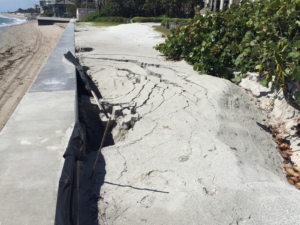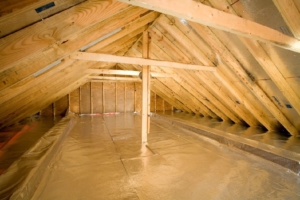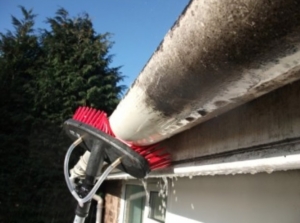Understanding R-Value Per Square Inch: 2023 Guide
Insulation is one of the most important components of a home’s energy efficiency. By preventing heat transfer between the inside and outside of a building, insulation can significantly reduce heating and cooling costs. One of the key factors that determine insulation effectiveness is the R-value per square inch. In this blog post, we will explore the science behind the R-value per square inch and why it matters.
Understanding R-Value
R-value is a measure of a material’s resistance to heat transfer. The higher the R-value, the more effective the insulation is at preventing heat transfer. R-value is calculated by dividing the thickness of the material by its thermal conductivity. The resulting number is the R-value per inch of thickness.
The Importance of Square Inch in R-Value
While R-value is an important measure of insulation effectiveness, it is not the whole story. R-value per square inch is a more accurate measure of how effective insulation will be in a given space. This is because the surface area of the material impacts how much heat transfer occurs. A thicker fabric with a lower R-value per square inch may be less effective than a thinner material with a higher R-value per square inch.
The Science of Insulation
Insulation works by creating a barrier between the inside and outside of a building. This barrier slows down the transfer of heat through conduction, convection, and radiation. R-value per square inch impacts insulation effectiveness because it determines how much heat transfer is prevented.
How to Evaluate R-Value per Square Inch
To evaluate the R-value per square inch of your insulation, you can consult a professional or refer to manufacturer specifications. Different types of insulation materials have different R-value per square inch ratings, so selecting the right material for your space is important.
R-value per square inch is a measure of insulation effectiveness that takes into account the surface area of the material. To calculate the R-value per square inch, you first need to know the R-value of the material per inch of thickness. Once you have this value, you can divide it by the surface area of the material in square inches.
For example, if you have fiberglass batt insulation with an R-value of 3.2 per inch and a thickness of 6 inches, the total R-value of the insulation would be 3.2 x 6 = 19.2. To calculate the R-value per square inch, you would divide 3.2 by the surface area of the material in square inches. The surface area of a 6-inch thick batt of insulation that is 16 inches wide and 48 inches long would be 768 square inches (16 x 48). Dividing 3.2 by 768 gives an R-value per square inch of approximately 0.004.
It’s important to note that the R-value per square inch can vary depending on the specific material used and the installation method.
Here are some common insulation types and their corresponding R-value per inch of thickness:
- Fiberglass batt insulation: R-3.2 to R-4.3 per inch
- Used in walls, attics, and floors
- Cellulose insulation: R-3.2 to R-3.8 per inch
- Used in walls, attics, and floors
- Spray foam insulation: R-3.5 to R-7 per inch
- Used in walls, attics, and roofs
- Polyurethane foam insulation: R-5.6 to R-6.5 per inch
- Used in walls, attics, and roofs
- Mineral wool insulation: R-3.0 to R-4.0 per inch
- Used in walls, attics, and floors
- Reflective insulation: R-1.0 to R-2.5 per inch
- Used in attics and roofs to reflect heat away from the building
The recommended R-value per square inch for insulation in Florida depends on the specific location within the state and the type of insulation being used. The U.S. Department of Energy provides recommended insulation levels for different areas of the country based on climate zones.
Here are the recommended R-values for insulation in walls, attics, and floors according to the U.S. Department of Energy:
- Walls:
- Climate zone 1: R-13 to R-15
- Climate zone 2: R-13 to R-21
- Climate zone 3: R-20 to R-30
- Climate zone 4: R-20 to R-30
- Climate zone 5: R-20 to R-30
- Climate zone 6: R-20 to R-30
- Climate zone 7: R-20 to R-30
- Climate zone 8: R-20 to R-30
- Attics:
- Climate zone 1: R-30 to R-49
- Climate zone 2: R-30 to R-60
- Climate zone 3: R-38 to R-60
- Climate zone 4: R-38 to R-60
- Climate zone 5: R-49 to R-60
- Climate zone 6: R-49 to R-60
- Climate zone 7: R-49 to R-60
- Climate zone 8: R-49 to R-60
- Floors:
- Climate zone 1: R-13
- Climate zone 2: R-13 to R-30
- Climate zone 3: R-25 to R-30
- Climate zone 4: R-25 to R-30
- Climate zone 5: R-25 to R-30
- Climate zone 6: R-25 to R-30
- Climate zone 7: R-25 to R-30
- Climate zone 8: R-25 to R-30
It’s important to note that these are just general guidelines, and the appropriate R-value for your specific application may vary based on factors such as the age and construction of your home, local building codes, and other considerations. It’s recommended to consult with a professional to determine the appropriate insulation material, thickness, and R-value for your specific application.
Florida, where we are the state is located in climate zone 2, which includes the southernmost parts of the state. For this zone, the recommended R-value per inch for attic insulation is R-30 to R-60, and the recommended R-value per inch for wall insulation is R-13 to R-21. These values are higher than those recommended for more temperate climates because of the high heat and humidity in Florida.
The lifespan of insulation in your attic can depend on several factors, including the type of insulation, the quality of the installation, and the local climate. In general, insulation can last for many years if it is properly installed and not damaged.
Insulation LifeSpan
Fiberglass and cellulose insulation are two common types of insulation used in attics, and they can last for 20-30 years or more if they are properly installed and not damaged. However, other types of insulation such as spray foam may have a longer lifespan of 50 years or more.
There are several signs that it may be time to replace the insulation in your attic, including:
- High energy bills: If you notice that your heating and cooling bills have increased significantly, it may be a sign that your insulation is no longer effective.
- Uneven temperatures: If some rooms in your home are consistently colder or hotter than others, it may be a sign that your insulation is not properly insulating the space.
- Damage or moisture: If your insulation is damaged or has signs of moisture, it may need to be replaced to ensure that it is effectively insulating the space.
- Age: If your insulation is more than 20-30 years old, it may be less effective and in need of replacement.
It’s recommended to have your insulation inspected regularly by a professional to ensure that it is still effective and in good condition.
I hope this has been helpful. If you have additional questions and want to get in contact with GGR Home Inspections please send us a note, text, or call.







